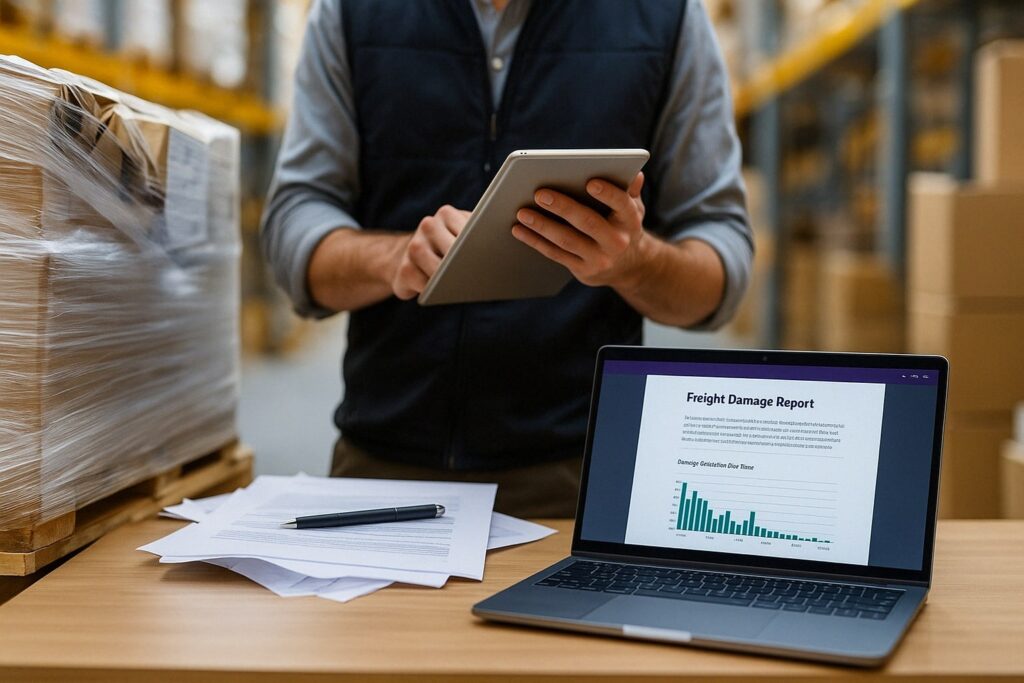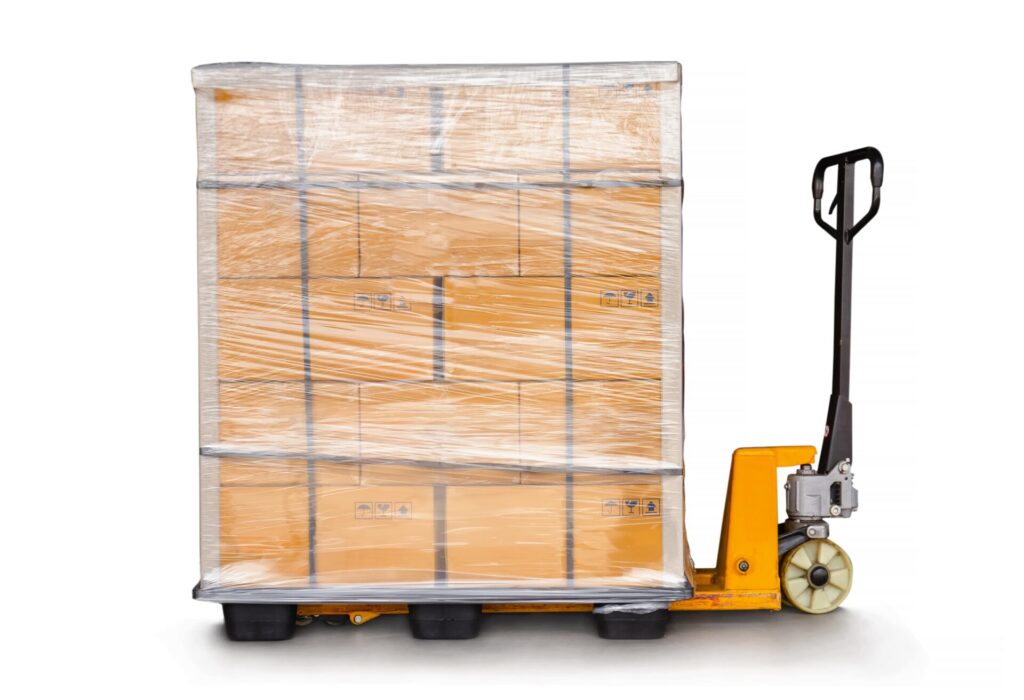
How to Handle LTL Freight Claims
Shipping goods via Less Than Truckload (LTL) can be a cost-effective solution for smaller, more frequent shipments—but with multiple handling points, there’s a real risk of damage, loss, or shortages along the way. Filing and managing LTL freight claims can be daunting if you don’t know the process or your rights. Knowing the proper steps to take when you spot damage or suspect a shipment has gone missing could mean the difference between recovering your losses or bearing them entirely.
This guide breaks down the fundamentals of how to handle LTL freight claims effectively, covering the prevention phase (e.g., correct packaging, thorough documentation) and post-delivery actions (like inspecting goods, filing claims, and negotiating settlements). By following these best practices, you can improve your odds of a swift, fair resolution while building stronger relationships with carriers, brokers, and insurance providers.
Introduction
Importance of a Well-Managed Claims Process
Freight damage or loss not only affects your inventory costs but can also disrupt timelines, reduce customer satisfaction, and strain your bottom line. A meticulous and timely claims process ensures you recover fair compensation and fosters accountability within the carrier network. Moreover, if you consistently show carriers that you track claims well, they may pay closer attention to handling your shipments carefully.
Overview of LTL Freight Liabilities
Carriers typically offer limited liability (e.g., cents-per-pound). If your product’s replacement cost exceeds that liability, you risk substantial financial hits when damage occurs. While you can buy extra coverage or declare a higher freight value, many shippers overlook these aspects until after a loss. Understanding the differences between carrier liability and additional insurance sets a strong foundation for dealing with potential claims.
Understanding LTL Claims
Types of Damage and Loss Claims
- Visible Damage: Clearly observable upon delivery (ripped cartons, dented crates, water exposure).
- Concealed Damage: Discovered after unpacking if a box or interior item is damaged, though exterior packaging looks fine.
- Shortages: Missing pieces or pallets from the original shipment.
- Total Loss: The entire shipment is lost or rendered useless by severe damage.
Each scenario necessitates a slightly different handling approach, especially regarding how you notate damage on delivery documents.
Typical Liability Limits and Coverage
Basic LTL liability might cap compensation at $0.10–$2.00 per pound—hardly enough for high-value electronics or fragile artwork. While some carriers provide specialized coverage for items like furniture or hazmat materials, it often still falls below a product’s true cost. Clarifying your coverage levels before shipping is crucial.
Preparing for Potential Claims
Packaging and Labeling Best Practices
Robust packaging reduces claim incidents. To minimize the chance of damage:
- Use quality pallets: Avoid cracked or heavily reused ones.
- Secure loads: Stretch-wrap or band cargo; add corner boards for extra stability.
- Label thoroughly: Mark “Fragile” or “This Side Up” if needed.
Well-documented packaging procedures can reinforce your claim if damage still arises, showing you took proper precautions.
Gathering Accurate Shipment Data
Compile pre-shipment details: weight, dimensions, commodity descriptions, and value. List each pallet or box with unique identifiers. This data, cross-referenced with the Bill of Lading, helps carriers track inventory at each cross-dock and clarifies what should arrive at the destination.

Steps to Take at Delivery
Inspecting Freight and Documenting Damage
Always examine your goods upon arrival—check for tears, crushed corners, or water damage. If anything looks off, photograph it. It’s critical to open suspicious-looking packages to confirm contents are intact. If you sign a clean proof of delivery (POD) without noting apparent damage, carriers can question subsequent claims.
Signing the Proof of Delivery (POD) Correctly
When you notice damage or shortage, note it explicitly on the POD (e.g., “2 pallets arrived, 1 pallet crushed—top boxes damaged”). Use precise language: mention the nature and extent of damage, not just “some boxes dented.” This immediate record is vital evidence of a claim.
Filing the LTL Freight Claim
Time Windows and Legal Deadlines
Carriers often require claims submission within 5–15 days of delivery for visible damage, or up to 9 months for concealed damage—depending on their tariff rules and local regulations. Missing these windows can void your claim, so act promptly once you detect damage or short shipments.
Essential Documentation (BOL, Photos, Invoices)
To file a claim:
- Claim Form: Carrier may offer a template or accept your own letter.
- BOL and Delivery Receipts: Emphasizing any damage notations.
- Photographic Evidence: Captures the condition of goods and packaging.
- Commercial Invoices or Value Proof: Demonstrates actual or replacement cost.
- Inspection Reports: If the carrier or an external surveyor inspects freight.
Substantial proof leaves less room for carriers to dispute or reduce claim payouts.
Collaborating with Carriers and Brokers
Communication Channels for Quick Resolution
Aim for a constructive tone when contacting carriers or brokers about claims. Provide them with all supporting documents in one go; ask for a specific timeline for resolution or status updates. Polite follow-up can expedite claim processing, showing you’re organized and aware of your rights.
Dealing with Disputed Claims
Carriers may argue that damage was due to “inadequate packaging” or “already damaged goods.” If you strongly believe the carrier caused it, gather additional evidence—like email logs or forklift damage photos from cross-docks—to strengthen your case. In some scenarios, partial settlements or negotiations happen, especially if you prefer preserving long-term business relationships.
Leveraging Additional Insurance
Carrier Liability vs. Full Coverage Policies
When a shipment’s worth far surpasses the carrier’s per-pound liability, consider:
- Declared Value: Pay an extra fee, raising the carrier’s coverage.
- Third-Party Cargo Insurance: Offers up to 100% coverage on invoice value, though it comes with premiums.
Evaluate how frequently you ship high-value freight. If it’s a rare event, single-shipment insurance might suffice. For regular high-value loads, an ongoing policy or arrangement with a broker can be more cost-effective.
Declared Value and Supplemental Options
For time-critical or extremely fragile shipments, you might opt to declare a higher value on the BOL, letting the carrier know their liability if damage or loss occurs. Keep in mind, carriers often charge a declared-value surcharge. Alternatively, a broker’s cargo insurance might be cheaper. Compare rates to see which approach suits your risk profile.

Preventing Future Claims
Ongoing Packaging Improvements
If you face repeated claims for the same item type, re-examine your packaging. Upgraded protective materials, increased cushioning, or robust palletization might slash breakage. Distribute weight evenly to avoid stacked pallet collapses. Also, consider labeling best practices that carriers easily recognize.
Choosing Reliable Carriers
Check a carrier’s claims ratio or ask for references. Consistent handling of your product type, a strong safety record, and updated fleets indicate a potentially lower damage risk. Building deeper ties with a single, reputable carrier can encourage them to handle your cargo with added care.
Resolving Claims Successfully
Negotiating Settlements and Reimbursements
Once you submit all paperwork, carriers typically investigate. If they accept liability, they’ll present a settlement offer. You can counter if it doesn’t match your documented loss. Finding a middle ground or requesting arbitration (where available) helps if the claim is large or complex. Keep all communications well-organized for clarity during negotiations.
Legal Recourse and Small Claims Court
If disputes remain unresolved, you can escalate matters legally. Sometimes small claims court or local arbitration suffices if the disputed amount fits those guidelines. Larger disagreements might need attorneys and potentially hamper your future relationship with that carrier—so weigh the cost and time of litigation carefully.
Conclusion
LTL freight claims—whether for damaged goods, shortages, or total losses—can disrupt your entire shipping cycle and eat into profits. By adopting proactive measures (like robust packaging, accurate BOLs, and timely inspections) and thoroughly documenting any damage from the moment the driver arrives, you equip yourself for a successful claim resolution. Further, investing in additional insurance for high-value shipments and choosing carriers with proven reliability slashes the likelihood of repeated issues.
In sum, a methodical approach to handling LTL claims helps you recover your rightful compensation while maintaining strong working relationships within your logistics network. Timeliness, transparency, and complete recordkeeping are your main allies in ensuring each shipment—no matter how small or frequent—reaches its destination intact, meeting your customers’ and stakeholders’ expectations.
How useful was this post?
Click on a star to rate it!
Average rating 0 / 5. Vote count: 0
No votes so far! Be the first to rate this post.



